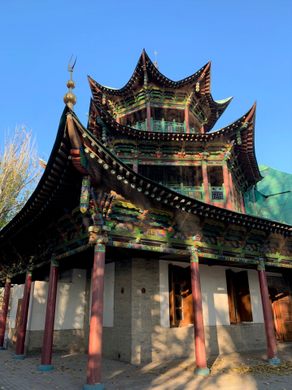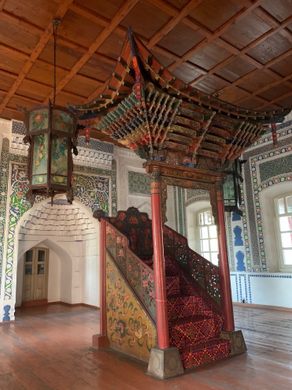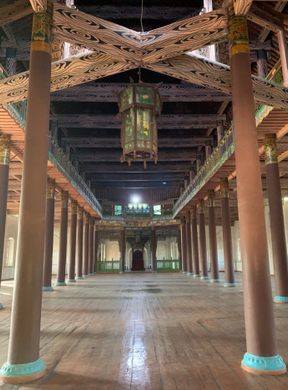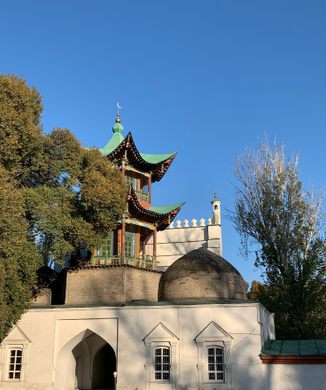Zharkent Mosque
This unique wooden mosque resembling a Chinese pagoda was said to be built without the use of nails.
Visitors could be forgiven for assuming they’d accidentally crossed the border from Kazakhstan into nearby China when they come across this unique former mosque, current museum.
The Zharkent mosque dates to around 1886, not long after the town was officially settled as a far-flung outpost of Tsarist Russia. Zharkent was a small Uighur settlement prior to official Russian township status and the mosque was sponsored by a wealthy local Uighur merchant, Valiakhun Yuldashev.
Yuldashev needed an architect who would comply with his demands to create a mosque and madrasa built entirely out of wood, using no nails. He chose Chinese architect Hong Pik. According to one local rumor, Hong Pik had created such astounding buildings in China that his life was threatened by customers who didn’t want anyone else to have what they had. Rather than forfeit his life or his livelihood, Hong Pik fled to Zharkent, the farthest place he could find a new customer. A competing legend claims that when Hong Pik finished his work and returned to China, he was executed for giving away Chinese architectural secrets.
No one really knows what happened to the architect, but his creation still stands, built with wood from fir trees in the nearby Tien Shan mountains.
The complex includes a madrassa and a mosque. According to the local tour guide, while classrooms were segregated by gender, instruction was available to both girls and boys.
The mihrab (prayer niche) and original main entrance to the mosque are similar in style to Central Asian Islamic architecture found throughout Central Asia. But the minaret, mosque exterior, and minbar (pulpit) are more like Chinese pagodas in design and decoration. Many of those decorations feature plants and flowers, contravening Muslim rules that limit depictions of living things in religious buildings.
It can hold some 1,000 worshipers, with women using the top floor gallery and men on the main floor. During Soviet times, when religious observances were discouraged and even banned, the mosque was re-purposed for various uses including a store, a cinema and even stables. Eventually they turned it into a museum, which it remains today.
The mosque has undergone repairs over the years to repair damage from wear and tear and several earthquakes. While it may have originally been constructed without nails, they have been added in various stages of repair and restoration. Inside the old classrooms are additional exhibits of local art and artifacts from the Kazakh and Uighur people who lived in the area before the Russians.
Know Before You Go
In the Latin alphabet Zharkent is alternately spelled Djarkent and Jarkent, and during Soviet times was renamed Panfilov, after a World War II war hero. It reverted to Zharkent in 1991. Depending on your map, you may find the town under any of these names.
The museum is open most days from 9 a.m. to 4:30 p.m. for guided tours, but hours posted on the door may reflect changes. While guided tours seem to be required, your guide may only speak Russian and/or Kazakh. The entrance fee is 300 Tenge per person, with another 500 Tenge requested if you want to take pictures inside the mosque. Although the “per person” or “per group” rules on the latter fee seem to be negotiable.














Follow us on Twitter to get the latest on the world's hidden wonders.
Like us on Facebook to get the latest on the world's hidden wonders.
Follow us on Twitter Like us on Facebook